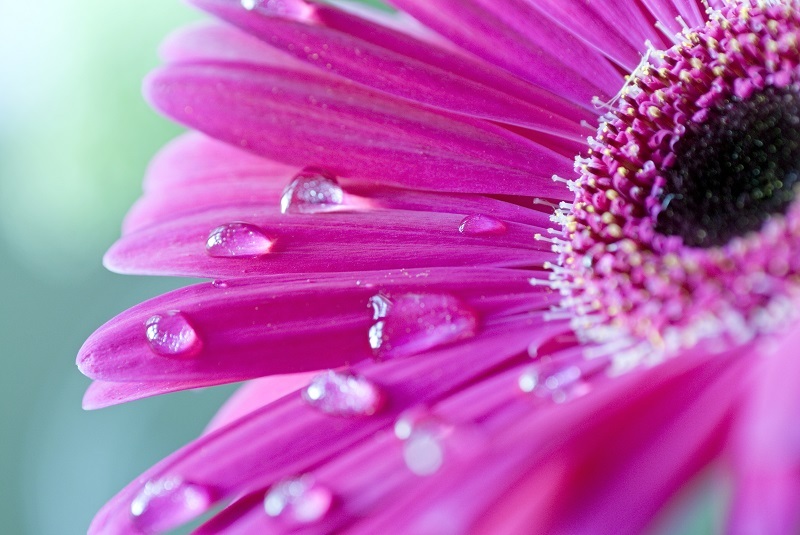8 Incredible Details About Sunflowers You've Likely Never Encountered
Sunflowers have captivated humans for centuries, celebrated as symbols of adulation, energizing drives, and nature's vibrant beauty. However, there's far more to these sun-loving blooms than their golden petals and striking height. This article dives into eight extraordinary and little-known sunflower facts that will leave you marveling at the history, science, and versatility of this iconic plant.
1. Sunflowers Are Mathematical Marvels: The Fibonacci Connection
While sunflowers enchant us with their bright faces, their secret brilliance lies in the unique spiral arrangement of their seeds. Each sunflower head can host hundreds or even thousands of seeds, arranged in a hypnotic pattern. But did you know this mesmerizing layout isn't random at all?
Decoding the Sunflower's Hidden Geometry
- This arrangement follows the Fibonacci sequence, a set of numbers where each number is the sum of the two preceding ones (e.g., 1, 1, 2, 3, 5, 8, 13...)
- Seed spirals typically form at angles approximating the golden angle (roughly 137.5 degrees), ensuring the most efficient packing--maximizing sunlight absorption and minimizing wasted space.
- This natural optimization has inspired architects, engineers, and artists across the globe.
This mathematical genius in sunflower seed arrangement allows the flower to pack the most seeds into the available space, boosting reproductive success!

2. Sunflowers Can Help Clean Polluted Soil
Sunflowers are more than just garden beauties--they're ecological powerhouses. Phytoremediation is the use of plants to absorb, remove, and neutralize pollutants from the soil, and sunflowers excel at this environmental service.
Remarkable Phytoremediation Abilities
- After the Chernobyl nuclear disaster in 1986 and the Fukushima disaster in 2011, scientists planted sunflowers across contaminated grounds to absorb radioactive isotopes like cesium and strontium.
- Sunflowers can also remove heavy metals such as lead, arsenic, and zinc from polluted sites--making them valuable allies in environmental clean-up efforts.
By planting sunflowers, we can restore damaged ecosystems while enjoying their radiant blooms.
3. Sunflowers Track the Sun with Astonishing Precision
The botanical phenomenon known as heliotropism isn't unique to sunflowers, but few plants demonstrate this sun-chasing behavior as perfectly.
How Sunflowers Chase the Sun
- Young sunflower plants face east at dawn and follow the sun as it crosses the sky, returning eastward during the night.
- This daily tracking maximizes photosynthesis, boosting growth rates and energy capture.
- Once the sunflower matures and the flower head blooms, it generally stays facing east. Why? This position attracts more pollinators by warming up faster in the morning sun.
This incredible movement, driven by hormonal changes and cell elongation on the stem's shaded side, has inspired countless poets, artists, and scientists alike.
4. Some Sunflowers Grow Toweringly Tall--Setting World Records
When we think of tall plants, trees typically come to mind. But sunflowers can also tower above us, and some have shattered expectations and records worldwide!
The Sky-High Sunflowers
- The current world record for the tallest sunflower, as recognized by Guinness World Records, is an astounding 9.17 meters (30 ft 1 in) tall, grown by Hans-Peter Schiffer of Germany in 2014.
- Select cultivars like 'Mammoth' and 'Russian Giant' are especially prized for their towering heights and gigantic blooms.
- To reach such heights, sunflowers rely on rich soil, ample sunlight, and frequent watering--making them both a gardening challenge and a local spectacle.
The sheer size and strength of these giants demonstrate the plant's remarkable vigor and tenacity.
5. Sunflowers Come in a Kaleidoscope of Colors
Forget the classic golden yellow! Modern horticulture has revealed that sunflowers boast a wide spectrum of colors and shapes.
Beyond the Golden Petal: Unique Cultivars
- Sunflowers are available in rich burgundies, creamy whites, subtle pinks, deep oranges, and even near-black hues.
- Dramatic varieties like 'Moulin Rouge', 'Italian White', and 'Chocolate Cherry' are favorites for unique gardens and vibrant bouquets.
- Some double-flowered breeds produce dense, fluffy pom-poms rather than the familiar single-row petals.
This diversity arises from generations of selective breeding and natural hybridization--proving that there's a sunflower for every personality and garden palette!
6. Sunflowers Support Biodiversity--More Than Just Bees!
We already know that sunflowers are pollinator favorites, but their ecological role goes much further.
The Sunflower's Bustling Ecosystem
- Bees (honeybees, bumblebees, solitary bees) swarm to sunflowers for their protein-rich pollen, especially varieties with pollen-rich centers.
- Birds, including finches and sparrows, feast on mature seeds, often flocking en masse to fall sunflower fields.
- Beneficial insects such as ladybugs, butterflies, and hoverflies are regular visitors, while the plant's broad leaves shelter necromancers like spiders and predatory beetles.
- Sunflowers also help support soil microbes and mycorrhizal fungi by exuding sugars and nurturing life below ground.
Planting sunflowers in your garden can increase biodiversity and create natural mini-ecosystems--making them a cornerstone for sustainable landscaping.
7. Sunflowers Have Deep Cultural and Historical Roots
Sunflowers aren't just garden favorites; they're part of humanity's oldest agricultural traditions and spiritual symbolism.
Tracing the Legacy of Sunflowers
- Native to North America, sunflowers were first domesticated by indigenous peoples over 4,500 years ago for their seeds, oil, and fibers.
- They held ceremonial importance in many tribes and were seen as a symbol of the sun, fertility, and good fortune.
- Spanish explorers later introduced sunflowers to Europe in the 16th century, where they gained popularity as ornamental and medicinal plants, and eventually as edible crops.
- Today, sunflowers are a global agricultural commodity, with hundreds of varieties grown for oil, food, and ornamentation.
The sunflower's presence in art--from van Gogh's timeless paintings to folk embroidery--proves its deep roots in human culture and imagination.

8. The Entire Sunflower Plant Is Useful--From Root to Petal
Many seasonal blooms delight us for only a fleeting moment, but every part of the sunflower can be harnessed for practical uses.
Multi-Purpose Marvels: Sunflower Byproducts and Their Uses
- Sunflower seeds are not only a nutritious snack, packed with vitamin E, magnesium, and healthy fats--they're also pressed for cooking oil and used in bird feeds and livestock forage.
- Sunflower oil is one of the world's healthiest and most popular plant oils, valued for its light taste and high oleic fatty acids.
- Petioles and stems can be dried and woven into mats, paper, or used as kindling.
- The flower heads, after seed harvest, can serve as natural sponges or scrubbers.
- Sunflower hulls are burned as biofuel or used as mulch, while their roots help stabilize soil and prevent erosion.
- Even the bright petals are edible, adding color and mild, bittersweet flavor to salads or tea blends.
Every aspect of the sunflower supports sustainability, making it an eco-friendly plant beloved by farmers and gardeners worldwide.
Sunflower Details That Will Change the Way You See This Iconic Plant
The next time you spot a sunflower field swaying in the breeze, take a moment to consider: Beyond their sunny disposition, these plants are mathematical geniuses, environmental allies, botanical powerhouses, and a source of endless inspiration for every observer.
- Sunflowers teach us about nature's hidden patterns, ecological balance, and the simple joys of beauty and sustenance.
- Whether you're a gardener, environmentalist, or simply a lover of wild wonders, knowing these incredible details about sunflowers can deepen your appreciation for what was once just a pretty flower.
Ready to plant sunflowers in your garden or farmscape? Embrace their rich legacy, support biodiversity, and witness the stunning science at play in every golden bloom!
Discover More Fascinating Sunflower Facts:
- Sunflower Growth: Myths and Surprising Truths
- The Story of Sunflowers in World Culture
- 7 Amazing Sunflower Varieties for Your Garden
Which detail surprised you the most? Share your thoughts and your own sunflower experiences in the comments!

